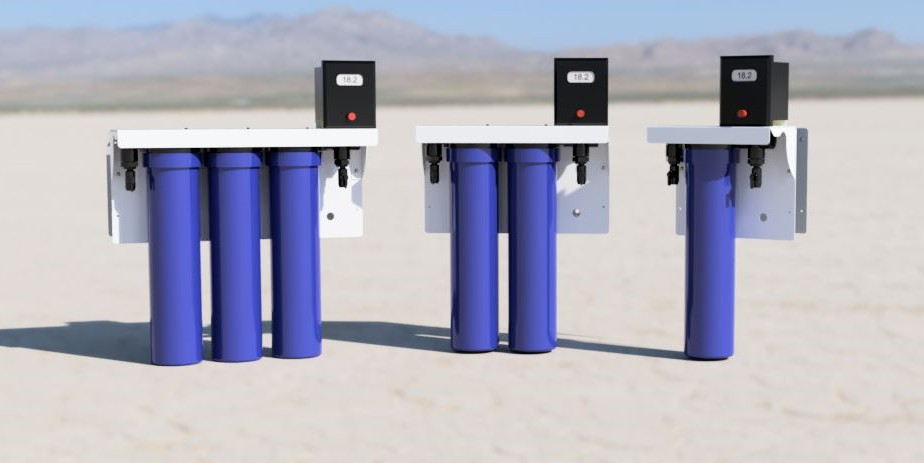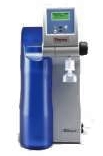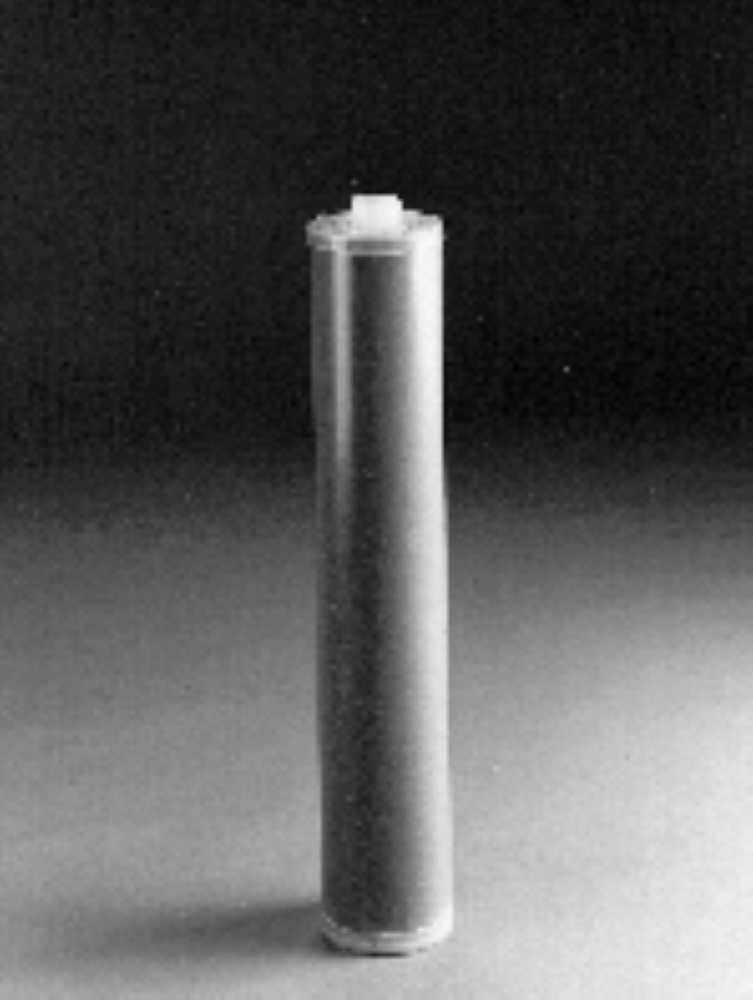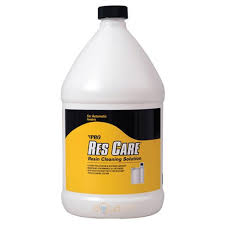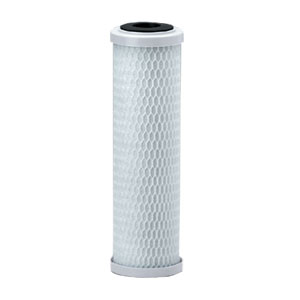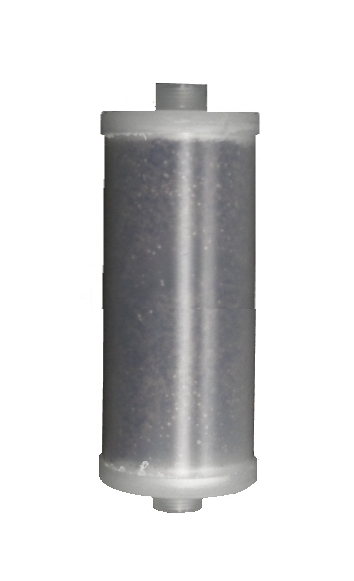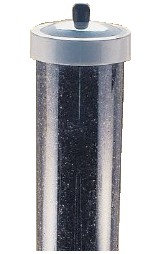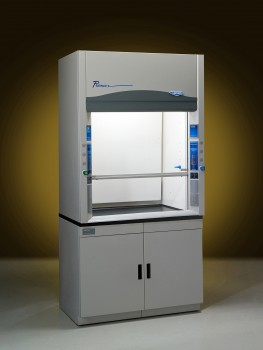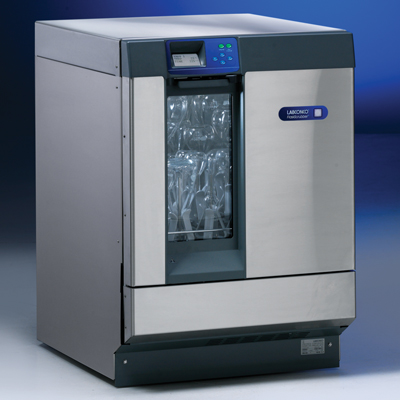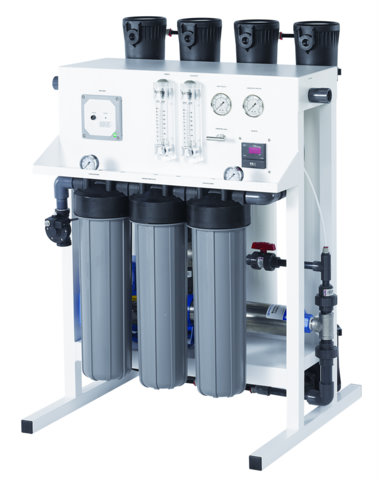A bladder is a balloon inside a tank that fills with water when there is pressure that is greater than that already in the bladder. A check valve stops the water from flowing backwards and reserves the water and pressure for use by the device it is feeding. This unique design also eliminates the need for a pump, as the bladder will act as a pump that uses no power.

Also See :
Troubleshooting a Pressure BladderPressure Bladder Capacity ChartsWe have all been there before, we set the perfect shower temperature and flow. We jump in to enjoy the perfect shower. A few minutes into the shower and we are comfortable. Someone in the house flushes a toilet, turns on a faucet or turns on the washing machine. The water in the shower goes instantly hot and we are left running for cover so we don't get burned.
This happens because as more cold water is used, the pressure on the cold water line is lower than on the hot water line. Since the hot water side has more pressure, you get more hot water.
You can eliminate this problem by installing a pressure bladder on the cold water line going to the shower, toilet, pump, boiler or other device that grabs a lot of water in a short period of time.
Pressure Bladders can be found hereHere is a simple diagram of how you would install a pressure bladder.
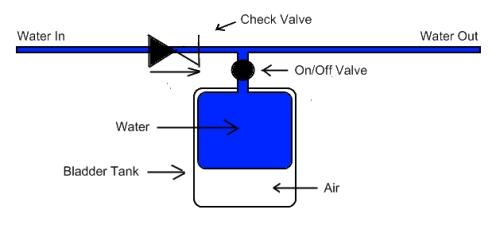
Once the bladder is full and the line pressure drops from a toilet flush or because of some other momentary use, the bladder empties and makes up the difference. Even if the water is completely turned off, the water continues to flow at the normal pressure out of the bladder until the bladder is empty.
Using a bladder to feed a shower
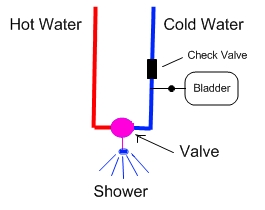
You can also use a bladder to feed other things such as dishwashers, boilers or other devices that use a lot of water initially. You can also use a bladder where you have a feed line that is too small or travels a long distance causing large pressure drops.
Using a bladder to feed other devices
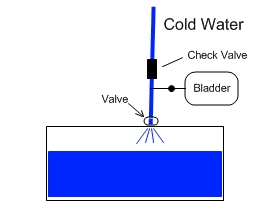
Using a bladder to feed pumps and Reverse Osmosis Systems
Bladder tanks are perfect to use before pumps. When a pump first starts up it 'sucks' water from the pipes. Pumps are damaged when they operate with the initial low pressure that happens normally. Placing a bladder before a pump can help reduce this damage and can cure systems with frequent low pressure alarms due to fluctuating line pressure.
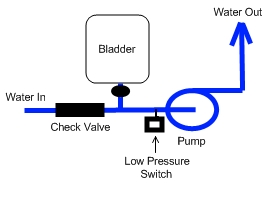

Economical Booster Pumps
Using a bladder to feed Homes and buildings
for low pressure or emergency water storage.
Bladders are great for use in emergency situations. They are both a storage container and a delivery system that come in handy when the main water supply is not available and has fluctuating pressure. In case of natural disasters where you lose power to pumps or do not have water and electricity at the same time, a bladder is a very good emergency water supply. You can always install several bladders after a single check valve and add as much storage capacity as you desire.

Using multiple bladders to feed Homes and buildings
foremergency water storage and delivery.
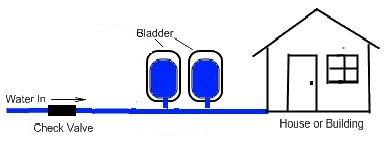
Using a pressure bladder to allow pumps to turn off.
A pretty standard use of a pressure bladder is to allow pumps to turn off when you are not drawing off water. By placing a bladder, pressure switch, check valve and a pressure switch after a pump, the pump will only run when needed. If you have only short bursts of water used at a time, the water will be drawn from the bladder instead of the line which would require the pump to turn on. A bladder will stop the pump from turning on and off quickly which can damage the pump and is very inefficient in operation.
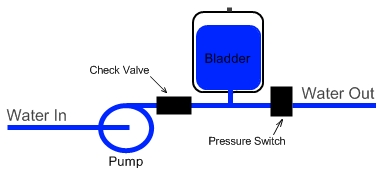
You can also install a bladder in front of a pump/bladder combination to stop dry starting of the pump. This design assumes you have a pressurized feed line that is either intermittent or has fluctuating static pressure. The first bladder will assure the pump has enough water on startup and the second bladder will store water just as in the above example.
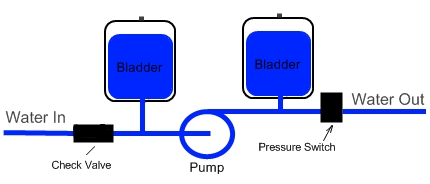
Trouble Shooting A Water Bladder Pressure Tank

Pressure Bladders can be found here

Economical Booster Pumps
Can Be Found Here
